---------
Mischievous wave of the wand for James Pradier's Sappho:
In an endearing, even brilliant retrospective note devoted to the personality and artistic career of the sculptor Jean-Jacques known as James Pradier (1790-1852), the journalist Louis Enault (1820-1900) wrote: "We will not draw up a catalog of his works without number; they are found everywhere (..) and, especially in boudoirs, which he has populated with statuettes and demigods: the statuettes are the sonnets of sculpture. "he has achieved the greatest popularity that an artist has ever achieved (...) between bearing, everywhere, the beloved name and the glorious name" (Le Figaro, April 23, 1854, pp.2-3). ). As in the past, "Who does not have at home one of these graceful figurines where all the qualities found in Pradier's great works are found proportionally reduced by these small masterpieces?" (E.-J. Delécluze, Journal des Débats ,1852).
The lover of French Sculpture of the 19th century, the collector of these small art bronzes which, from the interior beguilers of the Romantic era to the cozy Salons of the Second Empire, enjoyed the favors of Parisian society, will have recognized in this small animal effigy as unusual as it is mischievously subversive, Pradier's final work: The meditative Sappho (Marble, 1852) currently sitting in Paris in the Nave of the Musée d'Orsay (RF 2990).
Erudite studies (see Bilbliography) have traced the history of this impressive sculptural composition representing in an attitude both dignified and fierce the Greek Poet Sappho in the grip of amorous torment. Acquired by the State before the Sale (July 20, 1852) "after the death of the objects which furnished the Workshop and Cabinet of Mr. Pradier", this marble, with its slow and twisted gestation, appeared at the Salon of 1852 (no. 1520). With enthusiastic Salonniers (Théophile Gautier, E. Delécluze) or detractors (Gustave Planche, Eugène Loudun) of the distinctive "manner and trends" (noble and elegant form, thoughtful and graceful gestures, finesse of feeling exhilarated with a touch of sensuality) of this statuary concerned "with the taste of his time", he then unleashed strong praise and harsh criticism that only the death - on June 4, 1852 - of Pradier came to temper. Posthumously awarded a Medal of Honor, Pradier's Sappho became "by a common acclamation from the hearts of the artists" "the memorable object of public homage" (Raoul Rochette, 1853) attesting to the "most mourning profound of art and of France At the urging of the Count of Nieuwerkerke, Director General of Museums, Pradier's masterful work, piously draped in black crepe, was exhibited with a wreath of laurel and immortelles. placed at his feet" from July 10 to 18, 1852 under the gold of the Salon Carré of the Palais du Louvre. The Master's meditative Sappho entered the "Pantheon" of French Sculpture of the 19th century. Published during the artist's lifetime in the form of a bronze statuette available in various dimensions see uses ("an artistic clock of the best taste", inkwell) by the Parisian house Susse Frères, its highly appreciated model before its mature marmoreal version constituted -and always constitutes - alongside "the nymphs, the goddesses" (Psyche, Nyssia, Phrynea, Leda, etc.) imagined by this proponent of "exquisite grace and supreme elegance" one of the jewels of the Salon Statuette which Pradier renewed in its century the genre.
In view of these "biographical" elements, the emblematic Sapho de Pradier metamorphosed here, under the irreverent sketch of an artist whose identity remained secret, into an amphibian menu arouses surprise, smiles and even bursts of laughter.
To restore the composition developed by Pradier in the statuette of his Sappho-dressed and adorned in the Antique, sitting with his legs crossed, his hands clasped on his knees raised on a curule seat behind which stands his Lyre-, the author of this truculent effigy does not hesitate to abuse its flattering aesthetic codes. The absurd form, the picturesqueness and the smallness of the “animalized” figure nimbly scratch the impassive nobility of the model created by the Master. In addition, He rewards his caricatured version adorned with fatty flesh, singularly slender limbs with a prominent head, no longer inclined but held high. A trivial point, this detail makes sense: with mischief, our artist dispossesses Pradier's Sappho of her introspective reverie. The “pathos” dear to the “great genre” is reviled.
So how can we "meditate" or stare with dumbfounded eyes at this stoic figurine probably made during the year 1852-1853? The resounding aesthetic jousts between art critics following the presentation by J.Pradier at the Salon of 1852 of his marmoreal Sapho? The propensity of the time for the Salon Statuette stigmatized by the multiplication of versions or even bronze counterfeits of the dreamy effigy composed by the artist? The fame acquired by this sculptor in his time adored by crowned heads and the Parisian public for his “Flores, Nymphs, Galateae with a lively and charming turn”? And this, to the detriment of a phalanx of statuary artists no less devoid of talent of which the mysterious author of this sarcastic little bronze was perhaps one of...
The printed press of the moment invites another interpretation of this very singular work: a Portrait-charge (?) in line with the graphic productions of Jean-Jacques Granville (1803-1847) of the actress Mlle Page (Augustine, 1820- 1882) which had to embody, during the Revue du Théâtre des Variétés in January 1853, "parading" to the great dismay of the spectators "all the Novelties and Wonders of the year - the Crystal Palace, the New Circus Napoleon III , the famous Lady of the Camellias,...- who has just finished", "the Sapho de Pradier". Her performance is thus reported: "Volubile, poetic, ravishing from head to toe, Miss Page represented to us the tender, languorous Sappho. The charming actress achieved a success of beauty there and charmed the orchestra with her sweetness, the sadness and sweetness of her voice. Everyone wanted to be the Phaon of the tender Lesbienne des Variétés” (Le Siècle of January 2, 1853). Our sculptor shakes up the image of the one who was considered by his contemporaries as "the diamond of the Théâtre des Variétés" (V. Darthenay, 1853).
Clandestine in nature given the limited number of proofs listed today, this small bronze, as truculent as it is rare, will delight the Collector who loves unusual art objects full of history(s), mystery(s). It can also constitute for the Amateur a fun paperweight or spiritual paperweight.
----------------
Related literature: The Ivory Lyre. Henri-Pierre Picou and the Neo-Greeks, Exhibition Nantes, 2013, pp. 281-283, illus. 72; -Lepaire Jean-Claude, James Pradier and French sculpture of the romantic generation, Catalog Raisonné, Milan, 2010, n°366-367, pp. 394-395; -Statues of Flesh.Sculpture by James Pradier (1790-1852). Exhibition catalogue, Paris, Musée du Luxembourg; 1986, no. 22, pp. 171-174
Printed sources: Enault Louis, "Pradier", Le Figaro, April 23, 1854, pp.2-3. Delécluze Etienne-Jean, The Journal of Political and Literary Debates, June 13, 1852, pp. 3-4; Rochette, Raoul, Historical Notice on the life and works of M.Pradier, read at the public session of October 1, 1853, pp. 65; Charles Nathaniel de Fiennes, in: Le Siècle du January 2, 1853;-Dathenay V, Les Acteurs et les Actrices de Paris, 1853, pp. 61, 108
---------------------------------
Materials: bronze with brown patina; Griotte marble.
Dimensions: Total H.: 13 cm;-L.: 16.5 cm; Pr.: 10 cm - Bronze subject: H.: 10 cm; - L.: 14 cm; - Pr.: 7 cm.
French School of Sculpture of the 19th century, Anonymous. 1853
Beautiful condition. Little friction under the harp.


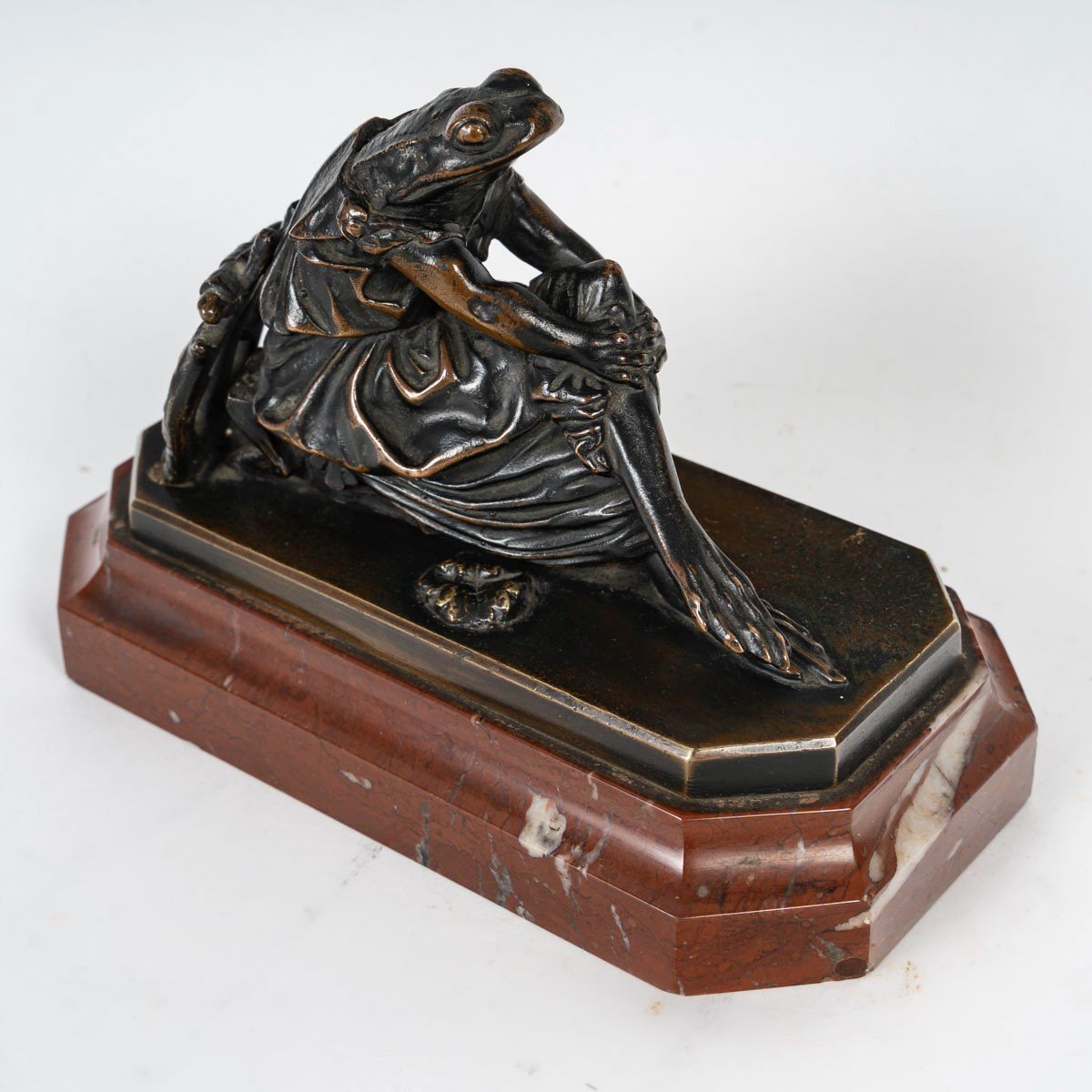



















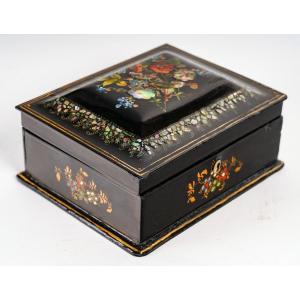

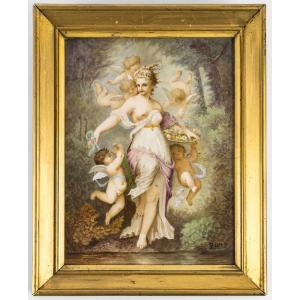




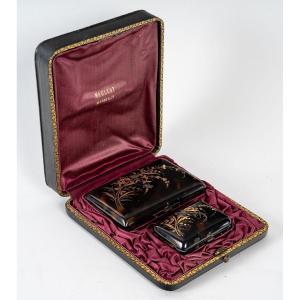


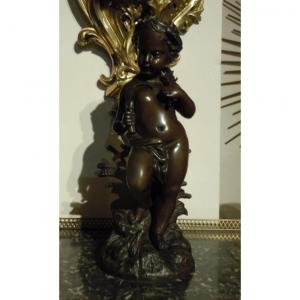
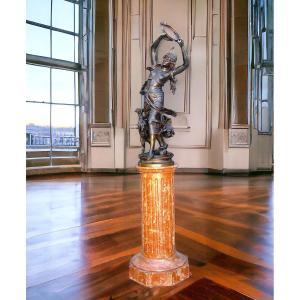


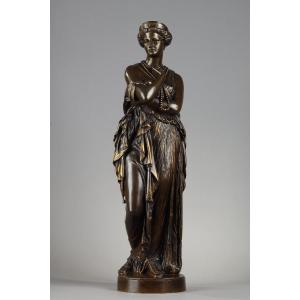



 Le Magazine de PROANTIC
Le Magazine de PROANTIC TRÉSORS Magazine
TRÉSORS Magazine Rivista Artiquariato
Rivista Artiquariato